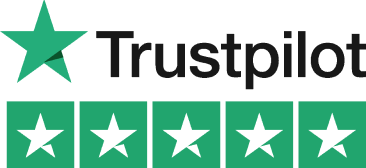Ok, So In A Nut Shell....
Did you know you can deduct allowable expenses like maintenance costs and mortgage interest when renting out property?
Whether you’re a first time landlord or a seasoned property owner, understanding rental income tax is crucial.
Our step-by-step guide will walk you through everything from calculating your taxable rental income to filing your Self Assessment tax return, so nothing you're all set for an easy breezy tax season.
Let’s get into it!
What Is Rental Income Tax?
So, what exactly is rental income tax? It’s the tax you pay on the money you earn from renting out property in the UK. And here's the catch: this rental income gets added to your other income, like your salary or freelance earnings, and taxed together.
The good news is that you only pay tax on your net rental income, the money left after you’ve deducted allowable expenses. Think of it as the money you actually make from renting, after accounting for things like maintenance costs or property management fees.
It’s also important to know that not all rental income is taxed the same. For example, income from a residential property is treated one way, but if you have a furnished holiday let, it might be subject to different tax rules.
And if you're earning money from commercial properties, the tax principles are the same, but with potentially higher rent and different expenses to consider.
Understanding these differences is super important, so you don’t get caught out when it’s time to file your taxes!
Types of Rental Income
When you're a landlord, you might find that your rental income comes from a few different sources, and each of these needs to be reported properly on your self-assessment tax return. Let's break it down!
Rent from tenants: This is the main source of rental income. It's the regular rent your tenants pay, whether monthly or weekly. This is the big chunk of what you’ll be paying taxes on.
Charges for additional services: If you're providing things like utility bills, council tax, or even internet and phone bills as part of the deal, those charges count as rental income too. So don't forget to include them!
Money retained from tenants’ deposits: Sometimes you may need to keep part of a tenant’s deposit, either for damages or unpaid rent. That money? It counts as rental income.
Income from furnished holiday lets (FHLs): If you're renting out a furnished holiday property, the income gets treated a little differently for tax purposes. So keep track of it separately!
Income from non-resident landlord (NRL) schemes: If you live outside the UK but have rental properties here, the income falls under the NRL scheme, and there are different rules around that too.
The key takeaway here is simple: make sure you're keeping detailed records of all the income you get from renting out properties.
It’ll save you from any headaches down the road when you file your taxes!

Allowable Expenses for Taxable Rental Income
Allowable expenses are a lifesaver for landlords with rental properties. They reduce your taxable rental income, so you only pay tax on what’s left. Here are some common ones:
Property maintenance and repairs: Fixing that leaky roof or broken boiler? Deduct it!
Letting agent fees: Whether they’re finding tenants or managing the property, their fees are tax deductible.
Landlord insurance: Protecting your investment also reduces your tax bill.
Keeping track of these expenses throughout the year is top priority. Use a spreadsheet, a folder for receipts or better still, a tax calculator like our Pie App!
Trust us, it makes filing much smoother and helps you avoid missing any eligible deductions.
Tax Rates and Bands for Rental Income
Okay, let’s simplify how rental income fits into the UK’s tax system. Your rental income is taxed just like any other income, so it follows the same tax bands as your salary.
Here’s how it works:
Basic rate (20%): For income up to £50,270.
Higher rate (40%): For income above £50,270.
Additional rate (45%): For income over £125,140.
If you’re renting through a limited company, you’ll pay corporation tax on your rental profits instead of personal income tax, which could work out better depending on your situation.
Be careful, though. If your rental income pushes your total income above £100k, your personal allowance starts to shrink, meaning more of your income gets taxed.
Understanding where your total income lands in the tax bands is key to avoiding unexpected tax bills.
Proper planning can save you a lot of hassle!
Calculating Rental Income Tax
Calculating your rental income tax involves several steps, but breaking it down can make the process more a whole lot easier. Let's make it simple:
Calculate your gross rental income: Start by adding up all the rental income you’ve received, including rent, charges for additional services, and money retained from tenants’ deposits.
Deduct allowable expenses: Subtract expenses that are wholly and exclusively for your rental business, such as mortgage interest, maintenance and repairs, insurance, and agent fees.
Calculate your net rental income: Your net rental income is what remains after deducting allowable expenses from your gross rental income.
Apply the property income allowance: If your net rental income is less than £1,000, you may be eligible for the property income allowance, meaning you won’t need to pay income tax on that income.
Calculate your taxable income: Add your net rental income to your other income, such as wages and other earnings.
Determine your income tax band: Your income tax band will depend on your total taxable income.
Calculate your income tax liability: Use the income tax rates and thresholds to determine your income tax liability.
By following these steps, you can accurately calculate the tax you owe on your rental income and ensure you’re compliant with HMRC regulations. Lovely stuff!

Filing Your Rental Income Tax
Filing your rental income tax is done through a Self Assessment tax return, and it’s easier than you might think if you stay organised. Here’s what you’ll need:
Rental agreements to show how much income you’ve received.
Receipts for expenses like repairs, insurance, and agent fees.
Mortgage interest statements, if applicable.
Deadlines matter! Paper returns are due by 31 October, while online returns must be filed by 31 January.
Missing these dates can result in fines, so it’s worth setting reminders, or even filing early if you’re a keen bean!
Furnished Holiday Lets (FHLs)
Furnished Holiday Lets (FHLs) are a special type of rental property with their own tax rules, and they can come with some nice perks if you qualify. To be considered an FHL, your property needs to tick a few boxes:
Location: It must be in the UK or the European Economic Area (EEA).
Furnishing: It’s got to be fully furnished so guests expect to walk in and start their holiday!
Commercial Basis: The property has to be let out to make a profit.
Availability: It must be available for rent for at least 210 days in the tax year.
Actual Letting: Out of those, it needs to be rented out for at least 105 days.
If your property qualifies as an FHL, you could unlock some great tax reliefs, like capital allowances for furniture and fittings or business asset disposal relief if you sell the property. These reliefs can reduce your tax bill and make owning an FHL more profitable.
Meeting the FHL criteria isn’t just about ticking boxes; it’s about making the most of your property’s potential.
If you think your holiday let qualifies, it’s worth getting some advice to make sure you’re taking full advantage of the tax benefits!

Non-Resident Landlord (NRL) Scheme
Are you a landlord living outside the UK? You still need to pay income tax on any rental income you receive from UK properties.
This falls under the Non-Resident Landlord (NRL) Scheme, which is HMRC's way of ensuring non-resident landlords stay compliant with UK tax laws.
To get started, you’ll need to register with HMRC and file a Self Assessment tax return. It can feel a bit tricky, especially since tax rules for non-residents can vary based on your individual situation, so it’s a great idea to consult with a tax pro to make sure you’re ticking all the right boxes.
The good news? You might qualify for certain tax reliefs that could help reduce your tax burden. Keeping on top of these rules means you’re more likely to benefit from them while staying in HMRC's good books.
Just remember, staying informed and organised will help you navigate the complexities of rental income tax as a non-resident landlord!
Tax Reliefs and Exemptions for Landlords
Good news! Landlords have access to some helpful tax reliefs and exemptions for you to check out:
Mortgage interest relief: While it’s limited now, you can still claim a 20% tax credit on finance costs.
Rent-a-Room Scheme: If you rent out a room in your home, you can earn up to £7,500 per year tax free under this scheme.
Capital Gains Tax (CGT): When selling a rental property, certain reliefs like private residence relief (if it was your main home at some point) can help reduce the tax bill.
Understanding and using these reliefs can significantly lower the tax you owe, so it’s worth taking the time to explore what applies to you to make the most of those savings.
You can read all about the ins and outs via the GOV website too!
Final Thoughts
Navigating rental income tax doesn’t have to be a pain in the neck!
By understanding what counts as taxable rental income, keeping track of allowable expenses, and staying on top of deadlines, you can effectively manage your tax obligations while maximising your earnings.
Take advantage of tax reliefs like the property income allowance and tools like the Pie Tax app to make the process smoother, too. Stay cool, calm and collected this tax season!




